Abstract
A theory is presented for the mechanics of the left ventricle. A linear continuum description of the myocardium is developed, which incorporates anisotropic elastic effects due to the fiber direction field. The relation between fiber tension and fiber strain contains a time-dependent activation function that drives the ventricle around its cycle. The theory is applied to a simplified geometry consisting of a thick-walled finite cylinder in which fibers spiral on helical paths and terminate on planar end surfaces. The helix pitch angle varies continuously through the wall. The ventricular cycle is analyzed by specifying the pressures at which the aortic and mitral valves open and close. Key quantities are tabulated which permit a simple determination of the properties of the model under changes of wall thickness, fiber angles, muscle parameters, preload, afterload, etc. It is shown how the active muscle parameters can be inferred from a measurement of the end systolic pressure-volume line.
Full text
PDF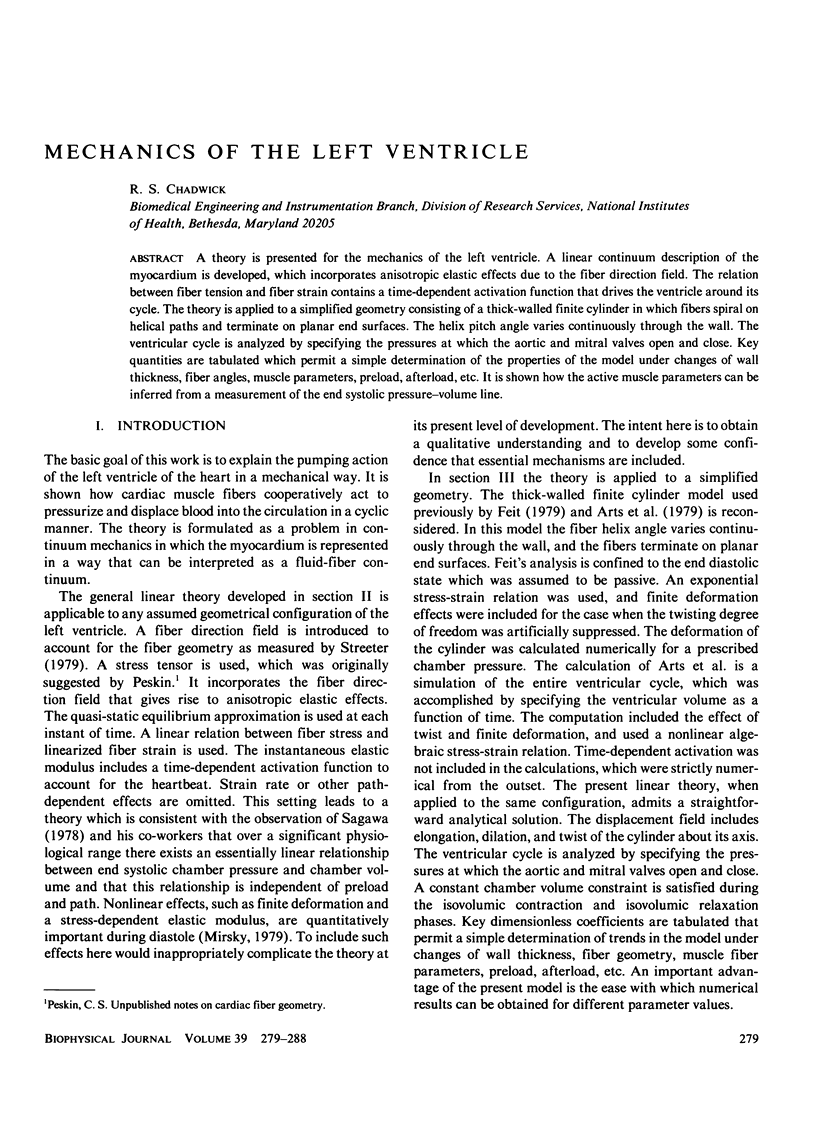
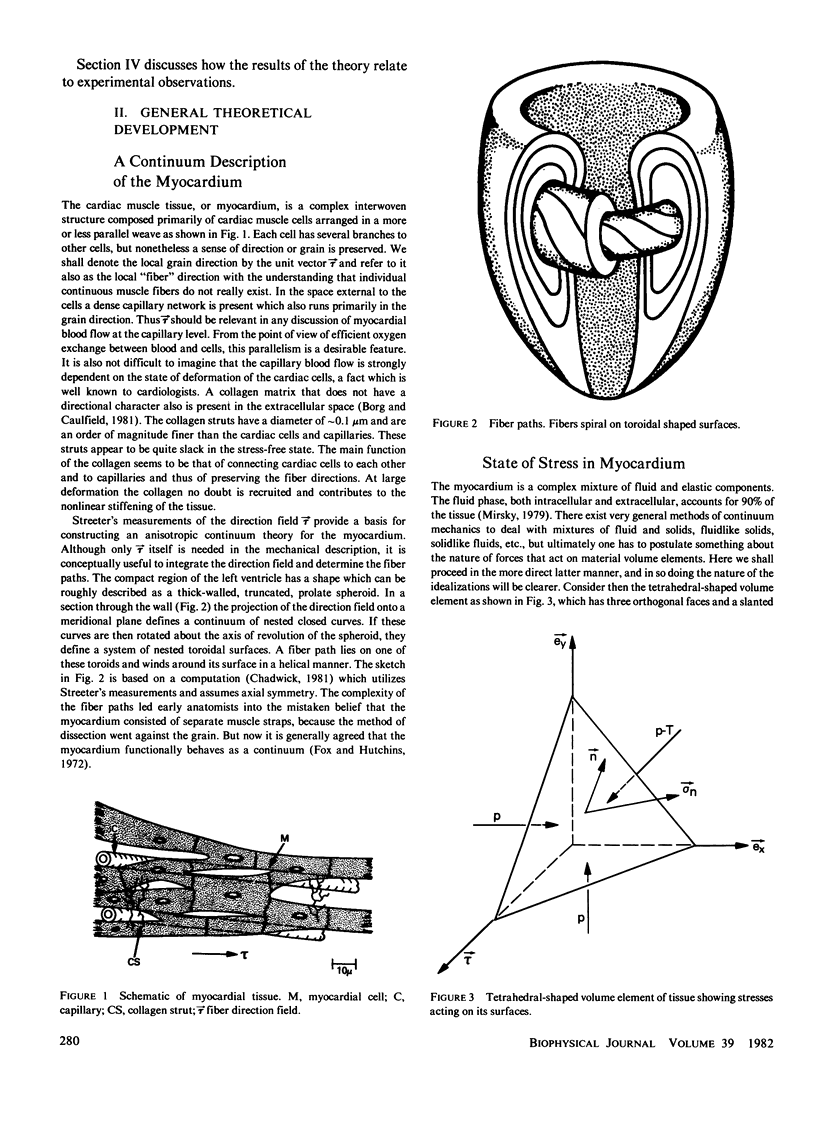
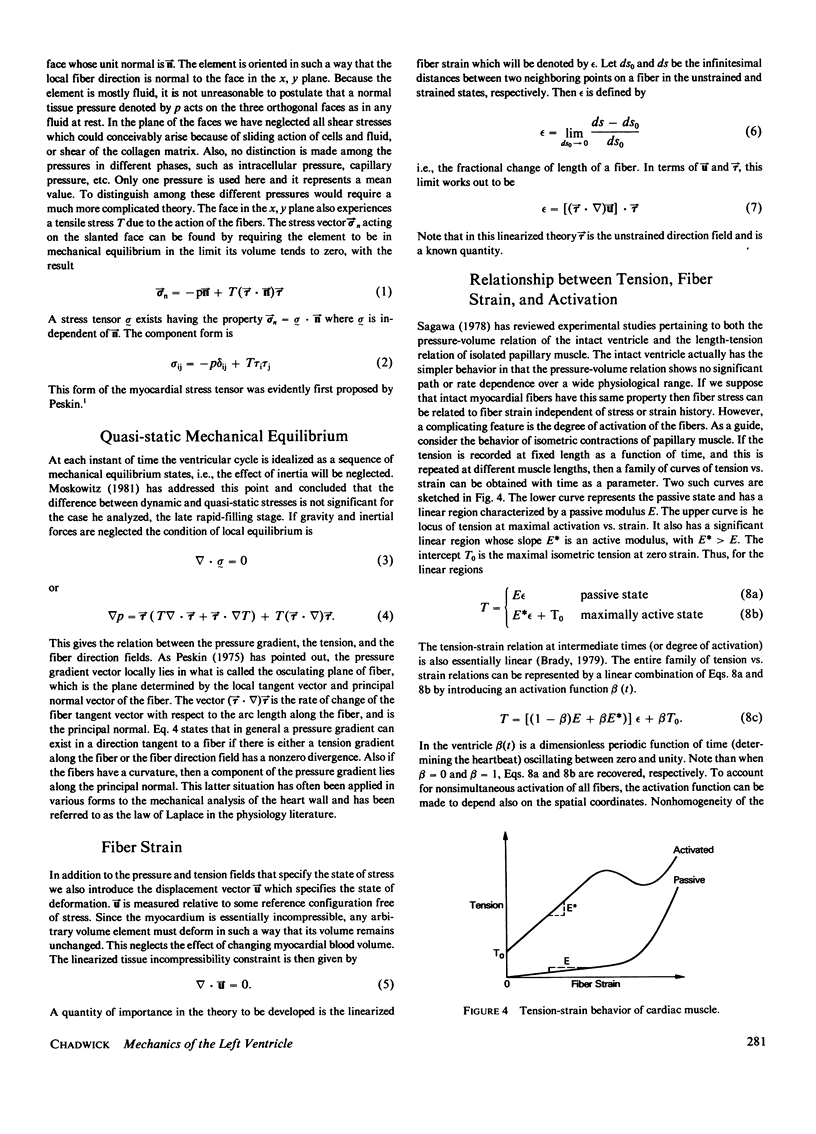
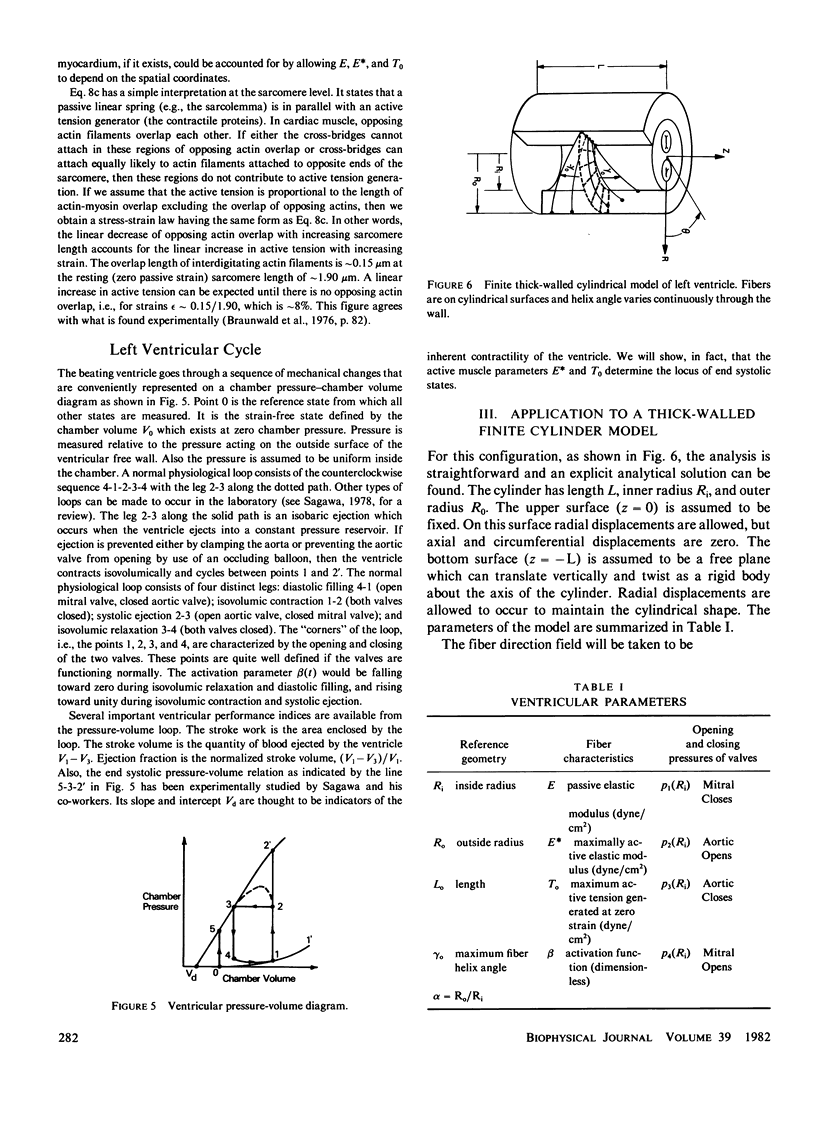
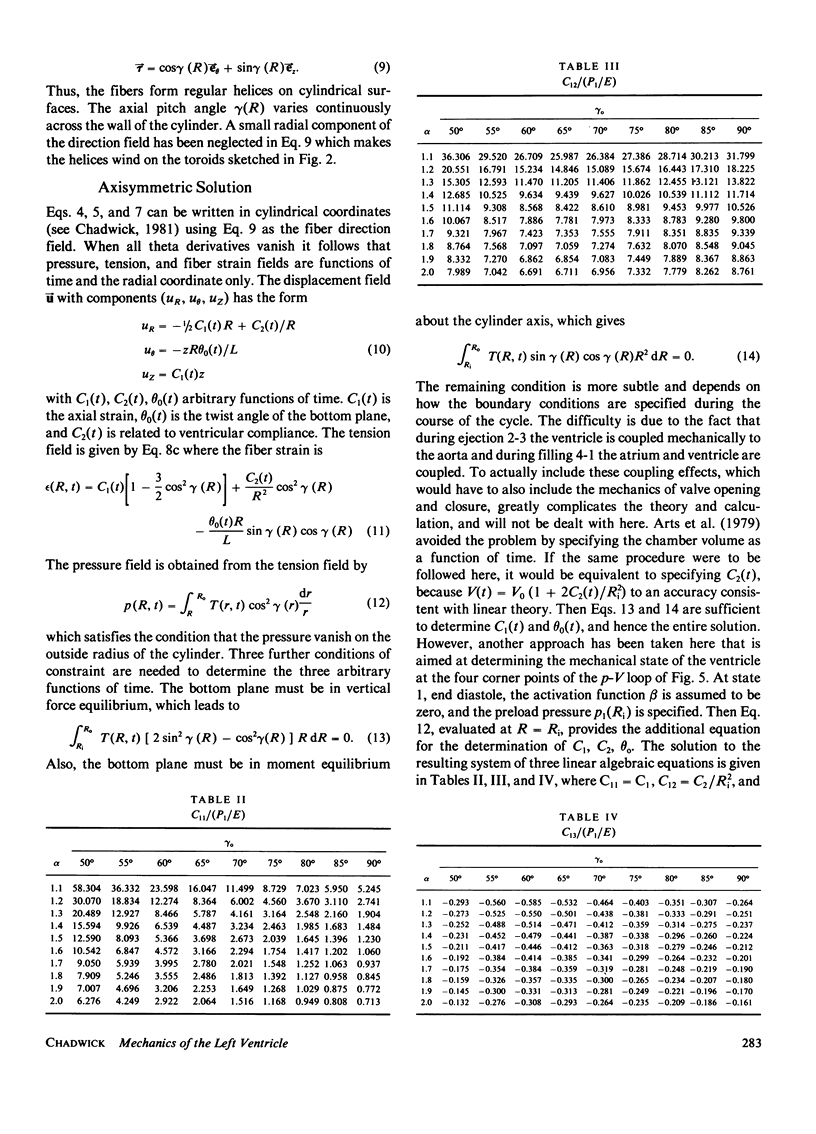
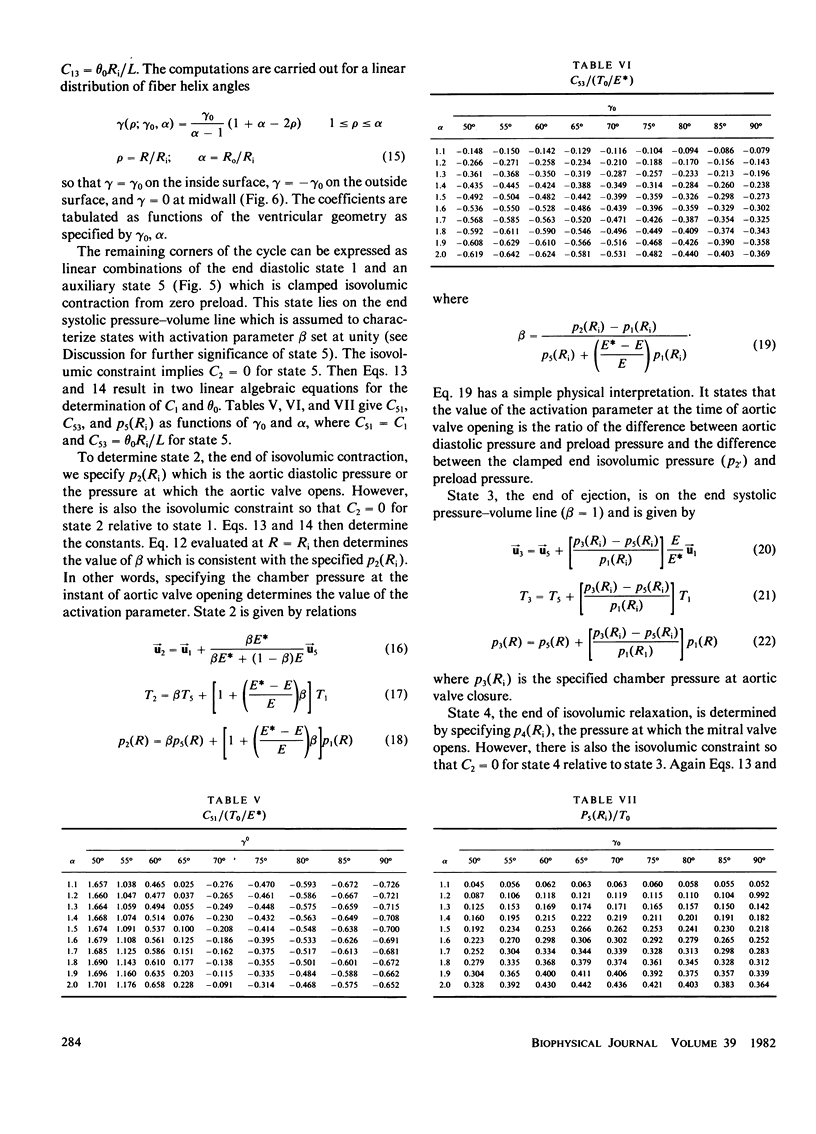
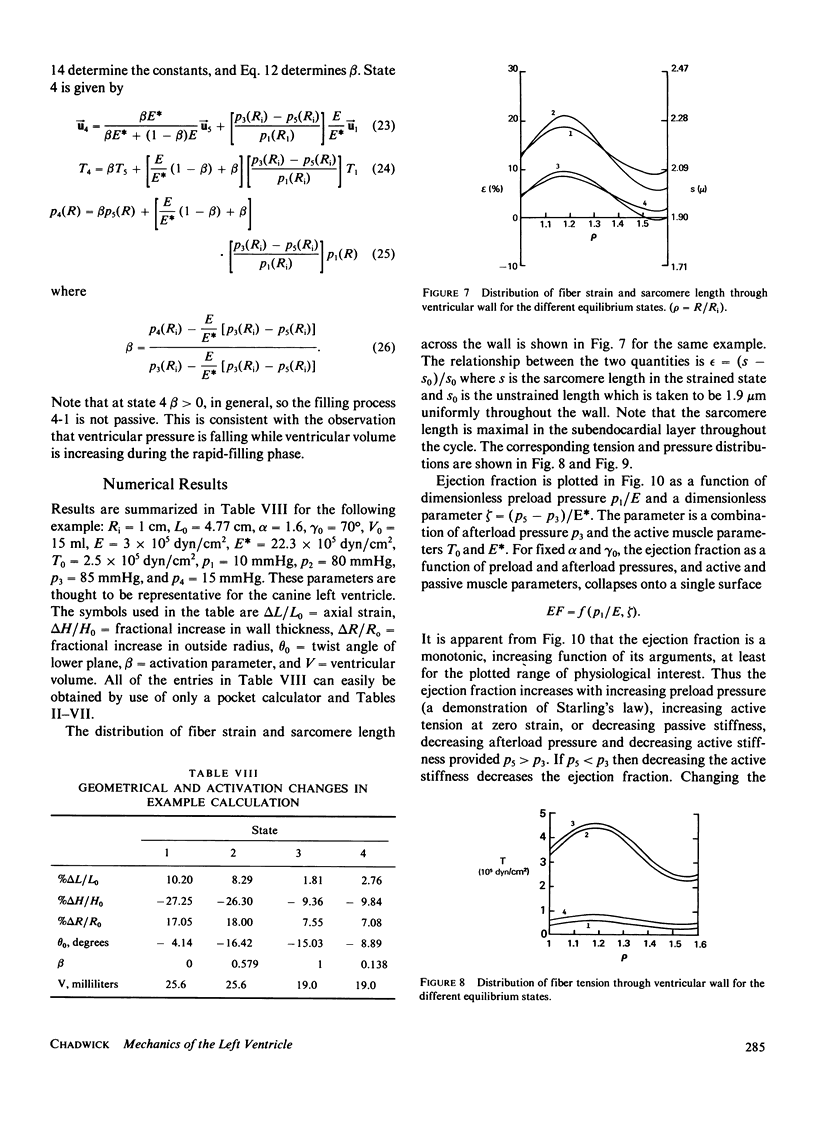
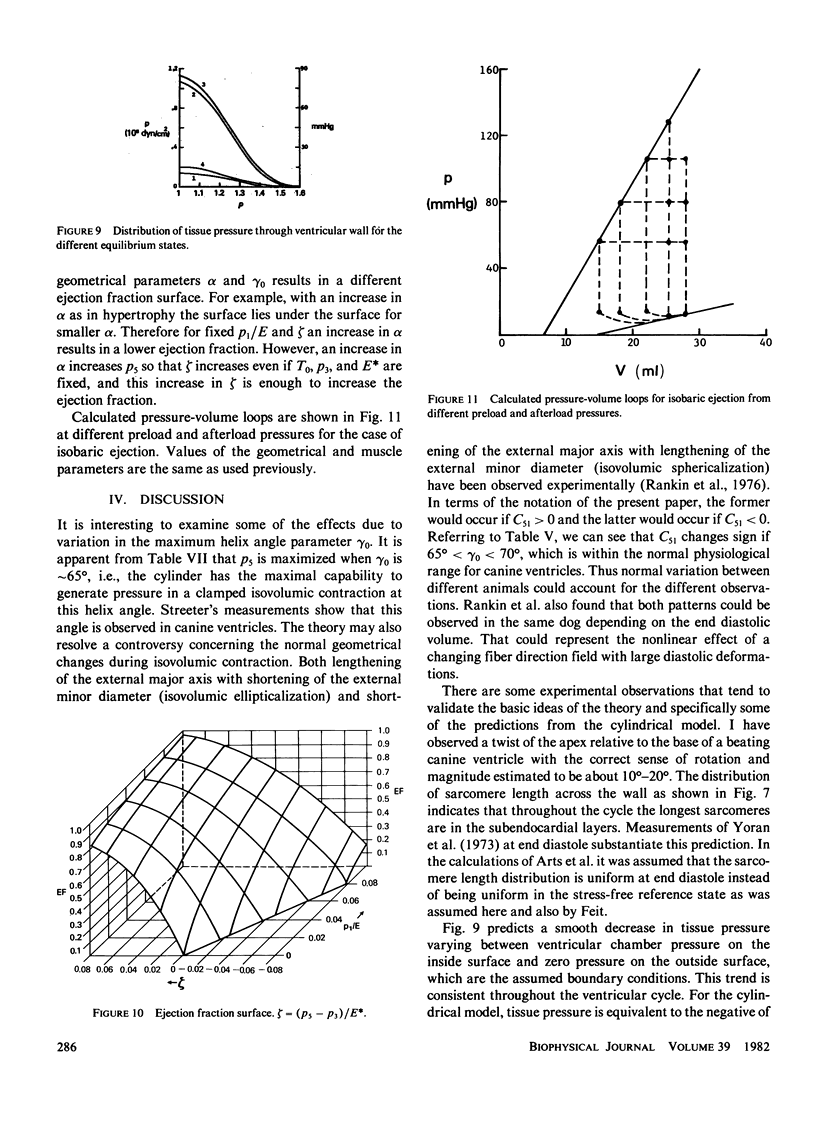
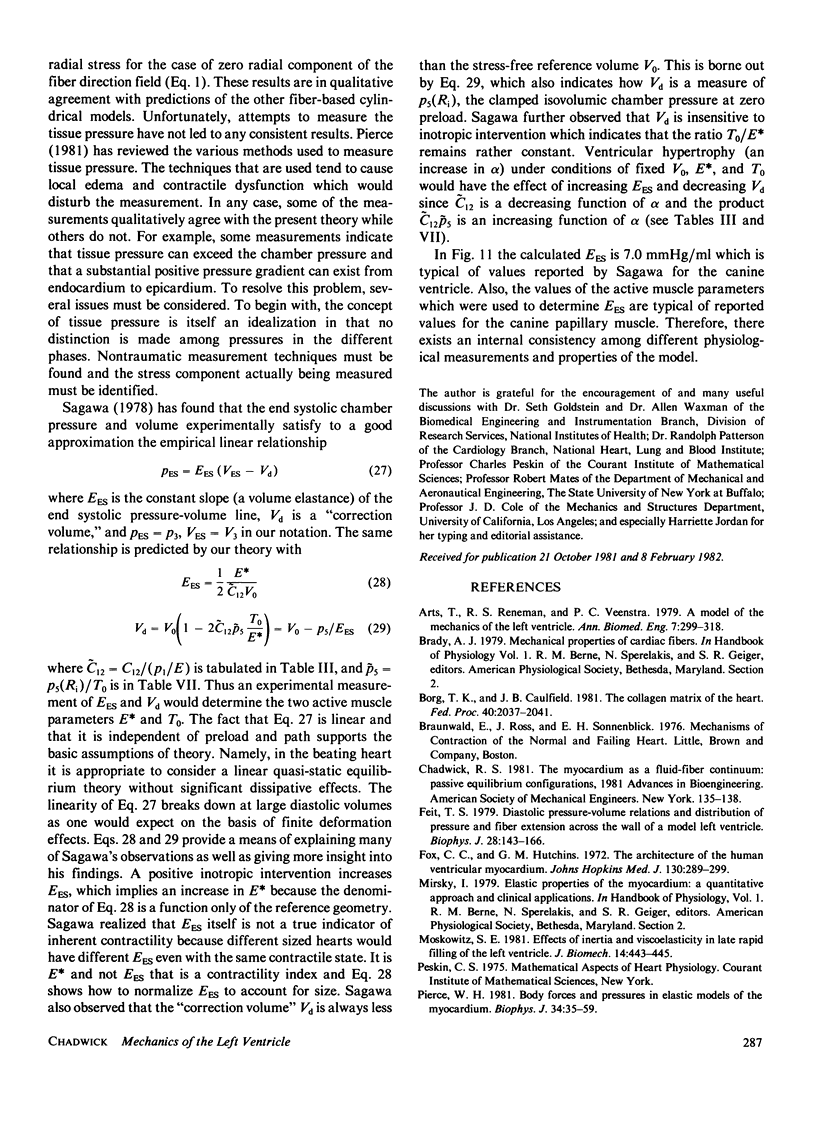
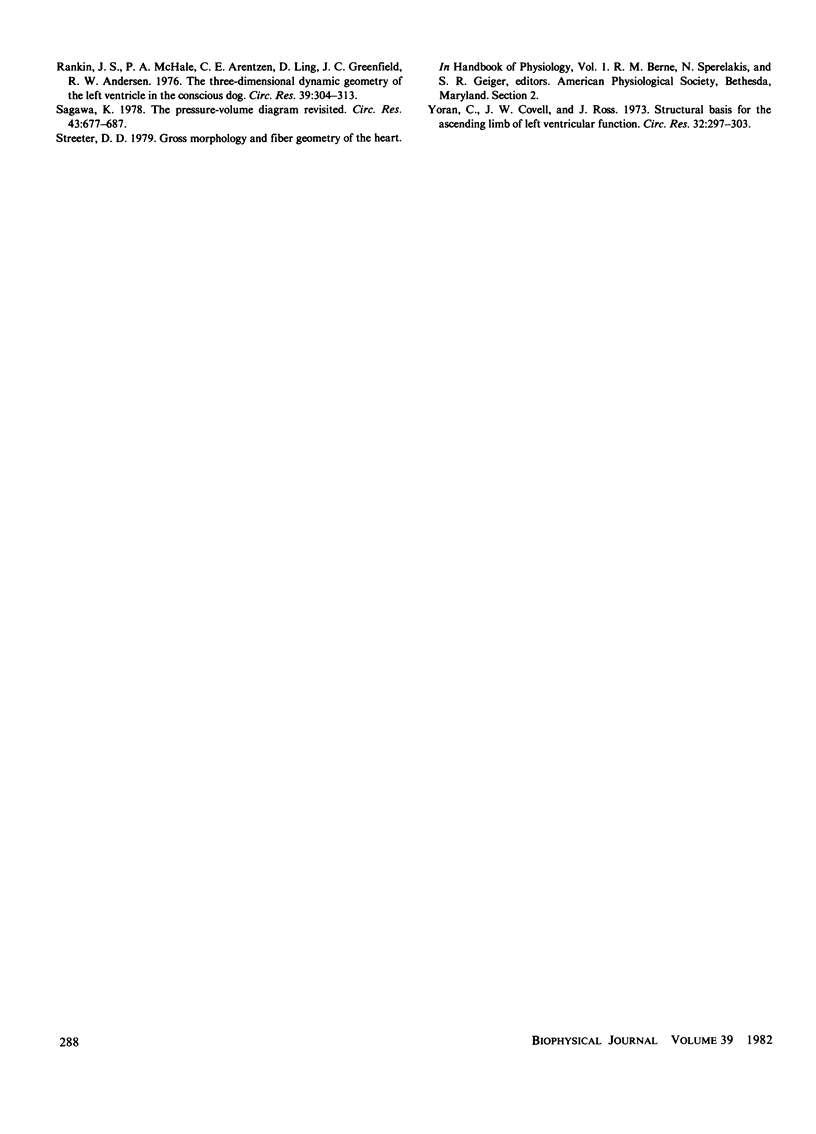
Selected References
These references are in PubMed. This may not be the complete list of references from this article.
- Arts T., Reneman R. S., Veenstra P. C. A model of the mechanics of the left ventricle. Ann Biomed Eng. 1979;7(3-4):299–318. doi: 10.1007/BF02364118. [DOI] [PubMed] [Google Scholar]
- Borg T. K., Caulfield J. B. The collagen matrix of the heart. Fed Proc. 1981 May 15;40(7):2037–2041. [PubMed] [Google Scholar]
- Feit T. S. Diastolic pressure-volume relations and distribution of pressure and fiber extension across the wall of a model left ventricle. Biophys J. 1979 Oct;28(1):143–166. doi: 10.1016/S0006-3495(79)85165-6. [DOI] [PMC free article] [PubMed] [Google Scholar]
- Fox C. C., Hutchins G. M. The architecture of the human ventricular myocardium. Johns Hopkins Med J. 1972 May;130(5):289–299. [PubMed] [Google Scholar]
- Moskowitz S. E. Effect of inertia and viscoelasticity in late rapid filling of the left ventricle. J Biomech. 1981;14(6):443–445. doi: 10.1016/0021-9290(81)90064-6. [DOI] [PubMed] [Google Scholar]
- Pierce W. H. Body forces and pressures in elastic models of the myocardium. Biophys J. 1981 Apr;34(1):35–59. doi: 10.1016/S0006-3495(81)84836-9. [DOI] [PMC free article] [PubMed] [Google Scholar]
- Rankin J. S., McHale P. A., Arentzen C. E., Ling D., Greenfield J. C., Jr, Anderson R. W. The three-dimensional dynamic geometry of the left ventricle in the conscious dog. Circ Res. 1976 Sep;39(3):304–313. doi: 10.1161/01.res.39.3.304. [DOI] [PubMed] [Google Scholar]
- Sagawa K. The ventricular pressure-volume diagram revisited. Circ Res. 1978 Nov;43(5):677–687. doi: 10.1161/01.res.43.5.677. [DOI] [PubMed] [Google Scholar]
- Yoran C., Covell J. W., Ross J., Jr Structural basis for the ascending limb of left ventricular function. Circ Res. 1973 Feb;32(2):297–303. doi: 10.1161/01.res.32.2.297. [DOI] [PubMed] [Google Scholar]


